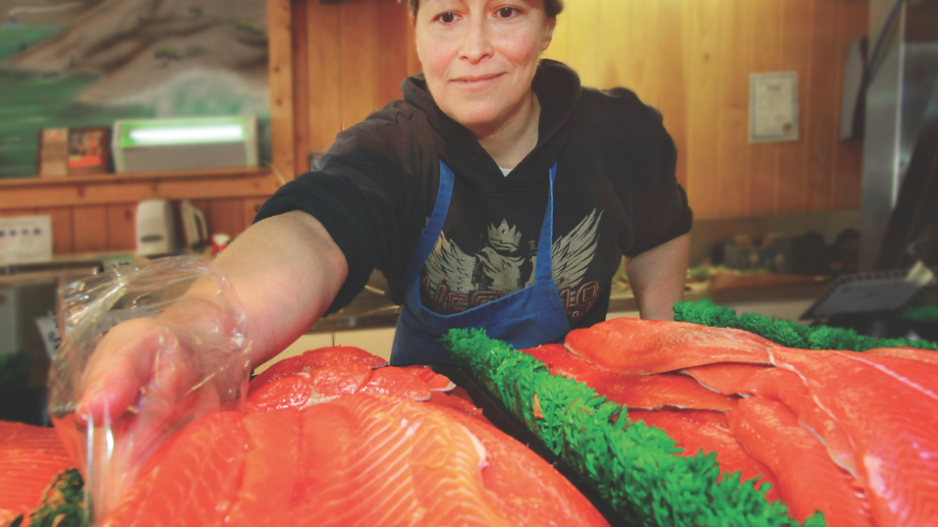The August 10 decision by sustainable-seafood program SeaChoice to end its relationship with the Overwaitea Food Group (OFG) highlights the lack of a universally accepted program that guides consumers toward buying choices that will not cause species extinction.
OFG’s “lack of transparency” prompted the move, SeaChoice spokeswoman Jenna Stoner told Business in Vancouver.
OFG spokeswoman Julie Dickson Olmstead described SeaChoice as a “complicated” ineffective program and said her company plans to partner with a new sustainable-seafood program soon.
SeaChoice is sponsored by four conservation groups: the David Suzuki Foundation, Living Oceans, Ecology Action Centre and Canadian Parks and Wilderness Society.
It partners with retailers and allows them to put colour-coded stickers on seafood to rank products. The traffic-light-inspired system uses three colours: green (good), yellow (caution) and red (bad).
Retail partners are not supposed to have red-sticker products and are expected to gradually reduce yellow-sticker products.
But SeaChoice is not the only sustainable seafood program.
The Vancouver Aquarium’s Ocean Wise program, which started in restaurants, now has its brand on retail products. It categorizes fish as either sustainable or not sustainable.
Globally, the Marine Stewardship Council (MSC) program, which is largely educational, is likely the best-recognized sustainable-seafood program, said George Heras, a principal at his family’s 7 Seas Fish Co. Ltd., which has two fish markets and a 35,000-square-foot processing and distribution centre in Richmond.
“It can be confusing for the customer.”
Heras added that sustainable- seafood programs sometimes give the consumer conflicting messages about the same kind of fish, and they sometimes judge entire regions or fisheries unfavourably without allowing that some fisheries in that area are fishing sustainably.
For example, SeaChoice paints the entire Mexican shrimp fishery sector as red because it assumes that most operators use trawlers, but Heras said some artisan fishing operations catch shrimp with hand nets and use small boats.
“I’ve been on their boats and have fished with them,” he said.
Lilli Andrade, the manager of 7 Seas’ West 4th Avenue store, said customers often ask about Ocean Wise but not SeaChoice or MSC.
Though the low Canadian dollar gutted fish processor High Liner Foods Inc.’s (TSX:HLF) second-quarter earnings, prompting its stock to sink 19.9% on August 5, Heras said 7 Seas has been able to pass on to customers the higher cost of buying fish in U.S. dollars.
“We won’t compromise on sustainability to keep prices the same,” he said.




